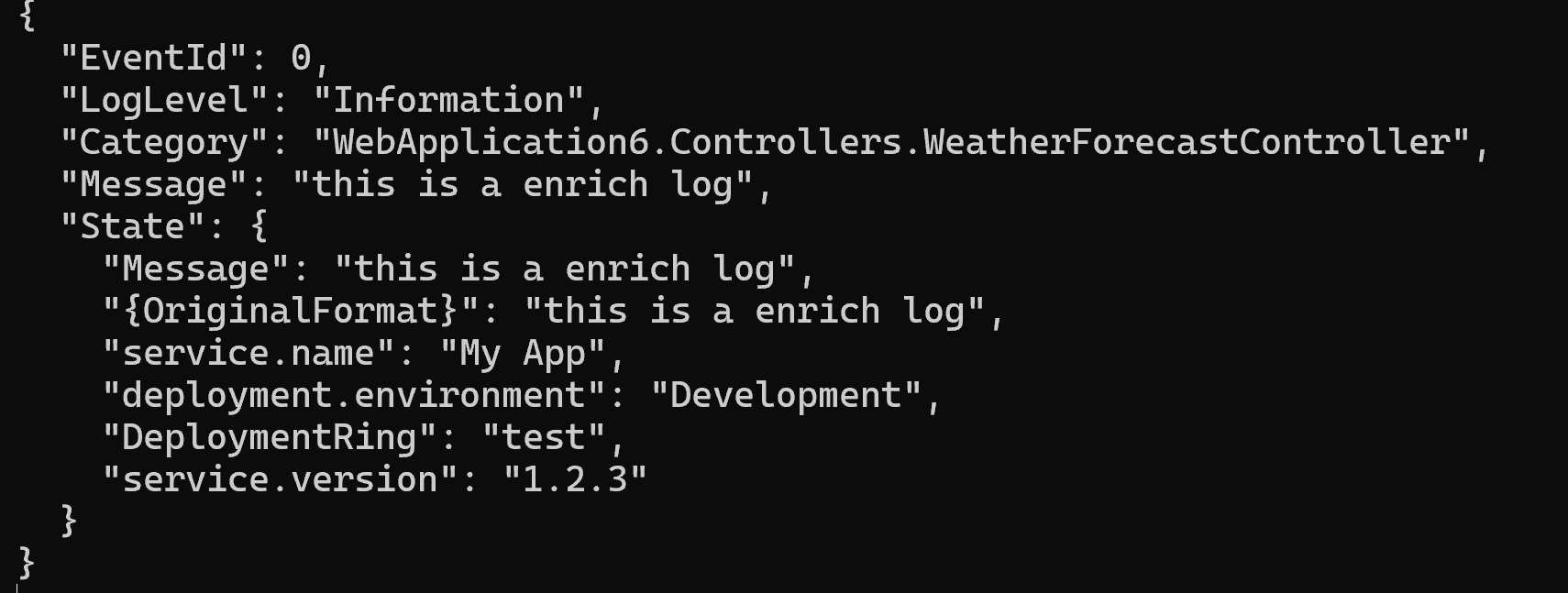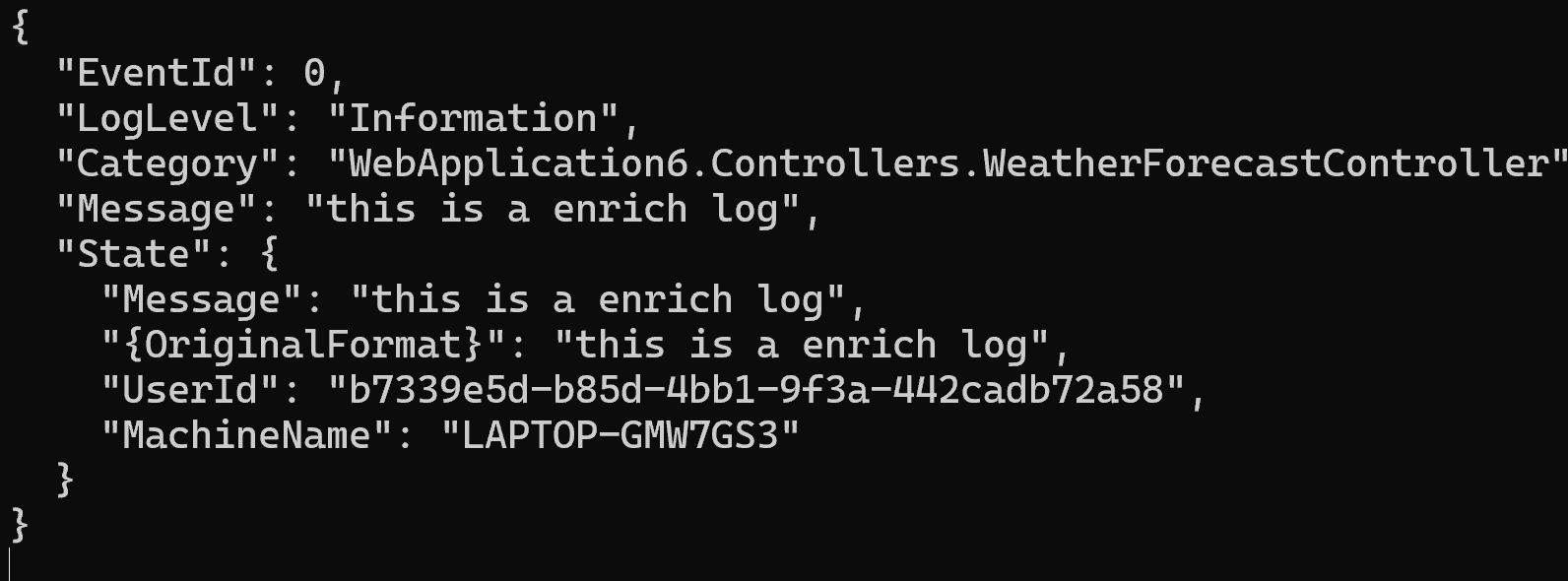TagProvider
[LogProperties] 与 [LogPropertyIgnore] 如果用在DTO不存在任何问题,如果用在Domain实体上,可能有点混乱。
您可能不希望因日志记录问题而使您的域模型变得混乱。对于这种情况,可以使用[TagProvider]属性来丰富日志。
我们仍然使用前面用的Network实体,这次它不再使用[LogPropertyIgnore]属性:
public class NetWorkInfo { public string IPAddress { get; set; } public int Port { get; set; } }
相反,我们定义了一个专用的“TagProvider”实现。
不需要实现接口或任何类,只需要正确的方法格式。
下面是我们给Network对象的标签提供程序,我们只记录字段IPAddres字段,如下所示:
internal static class NetWorkInfoTagProvider { // 👇 Has the required signature 'void RecordTags(ITagCollector, T)' public static void RecordTags(ITagCollector collector, NetWorkInfo network) { // You can add aribrtrary objects to be logged. // You provide a key (first arg) and a value. collector.Add(nameof(NetWorkInfo.IPAddress), network.IPAddress); } }
定义标签提供程序后,我们现在可以在日志记录方法中使用它。
将属性替换[LogProperties]为[TagProvider]如下所示的属性:
public static partial class Log { [LoggerMessage( EventId = 0, Level = LogLevel.Error, Message = "Can not open SQL connection {err}")] public static partial void CouldNotOpenConnection(this ILogger logger, string err, [TagProvider(typeof(NetWorkInfoTagProvider), nameof(NetWorkInfoTagProvider.RecordTags))] NetWorkInfo netWork); }
按正常方式调用即可,可以看到Network.IPAddress已经记录到日志的State属性中。
private static async Task Main(string[] args) { using ILoggerFactory loggerFactory = LoggerFactory.Create( builder => builder.AddJsonConsole( options => options.JsonWriterOptions = new JsonWriterOptions() { Indented = true })); ILogger logger = loggerFactory.CreateLogger("Program"); logger.CouldNotOpenConnection("network err", new NetWorkInfo { IPAddress = "123.1.1", Port = 7777 }); }

Enricher
Microsoft.Extensions.Telemetry包可以像Serilog一样丰富日志。首先添加Nuget包
<PackageReference Include="Microsoft.Extensions.Telemetry" Version="8.3.0" />
首先使用方法ILoggingBuilder.EnableEnrichment()启用全局丰富,并通过AddProcessLogEnricher将进程的日志信息添加到日志中。
builder.Logging.AddJsonConsole(options => options.JsonWriterOptions = new JsonWriterOptions() { Indented = true } ); builder.Logging.EnableEnrichment(); // Enable log enrichment builder.Services.AddProcessLogEnricher(x => { x.ProcessId = true; // Add the process ID (true by default) x.ThreadId = true; // Add the managed thread ID (false by default) });
也可以通过metadata自定义使用的字段
builder.Services.AddServiceLogEnricher(options => { options.ApplicationName = true; // Choose which values to add to the logs options.BuildVersion = true; options.DeploymentRing = true; options.EnvironmentName = true; }); builder.Services.AddApplicationMetadata(x => { x.ApplicationName = "My App"; x.BuildVersion = "1.2.3"; x.EnvironmentName = "Development"; x.DeploymentRing = "test"; });

这些内置的丰富器很方便,但也可以创建自定义的实现。
自定义LogEnricher
您可以通过从或接口IStaticLogEnricher和ILogEnricher派生创建自己的丰富器
- IStaticLogEnricher: IStaticLogEnricher—是全局的enricher,如果日志在整个声明周期中不变则可将其标签添加到记录器中。
- ILogEnricher- 每次写入日志时都会调用丰富器,这对于可能更改的值非常有用。
我们将创建一个简单的IStaticLogEnricher,将当前计算机名称添加到日志中,另外创建一个ILogEnricher,将当前用户Id添加到日志中。
internal class MachineNameEnricher : IStaticLogEnricher { public void Enrich(IEnrichmentTagCollector collector) { collector.Add("MachineName", Environment.MachineName); } } internal class UserIdEnricher : ILogEnricher { public void Enrich(IEnrichmentTagCollector collector) { collector.Add("UserId", Guid.NewGuid().ToString()); } } builder.Logging.EnableEnrichment(); // Enable log enrichment builder.Services.AddStaticLogEnricher<MachineNameEnricher>(); builder.Services.AddLogEnricher<UserIdEnricher>();



 浙公网安备 33010602011771号
浙公网安备 33010602011771号